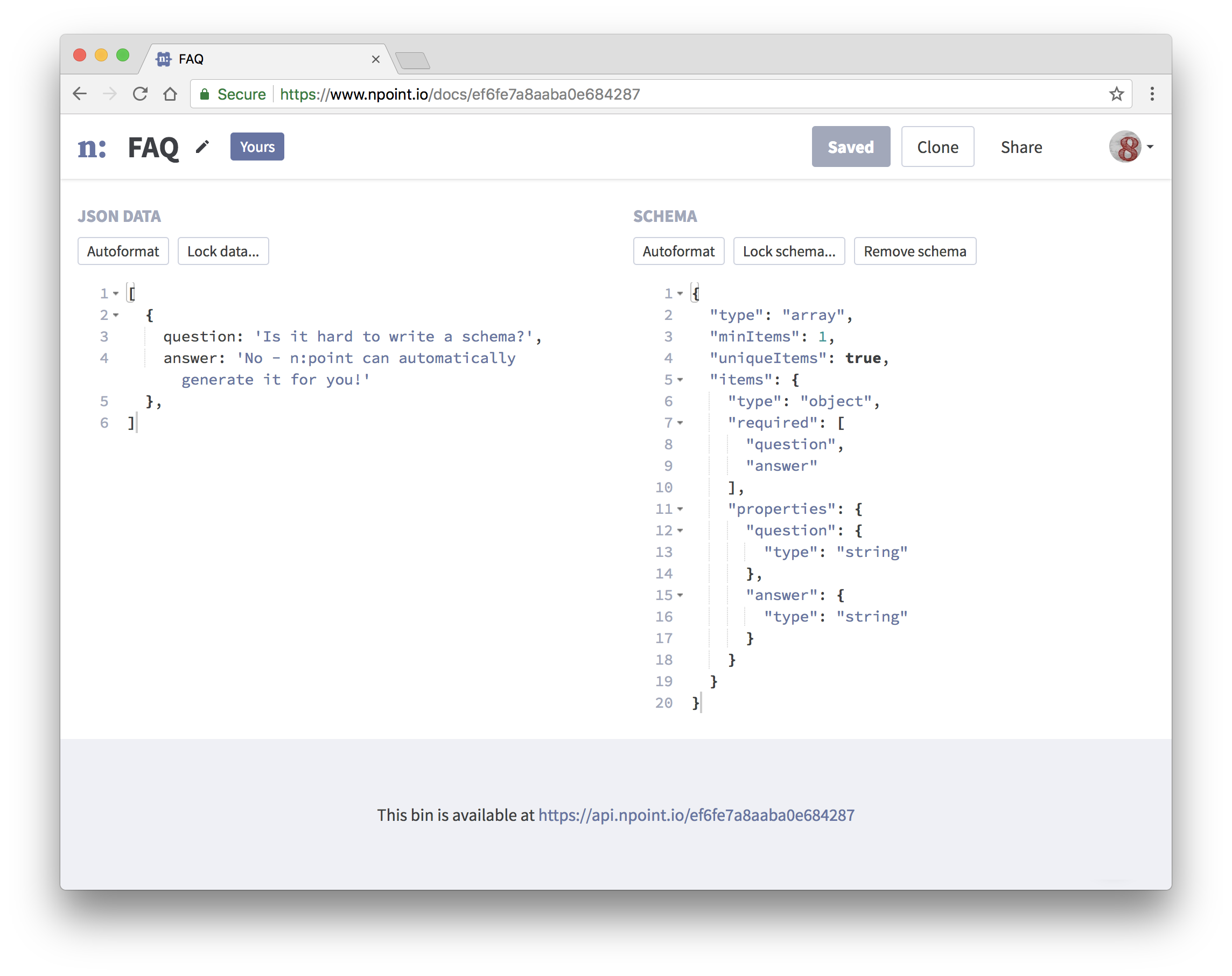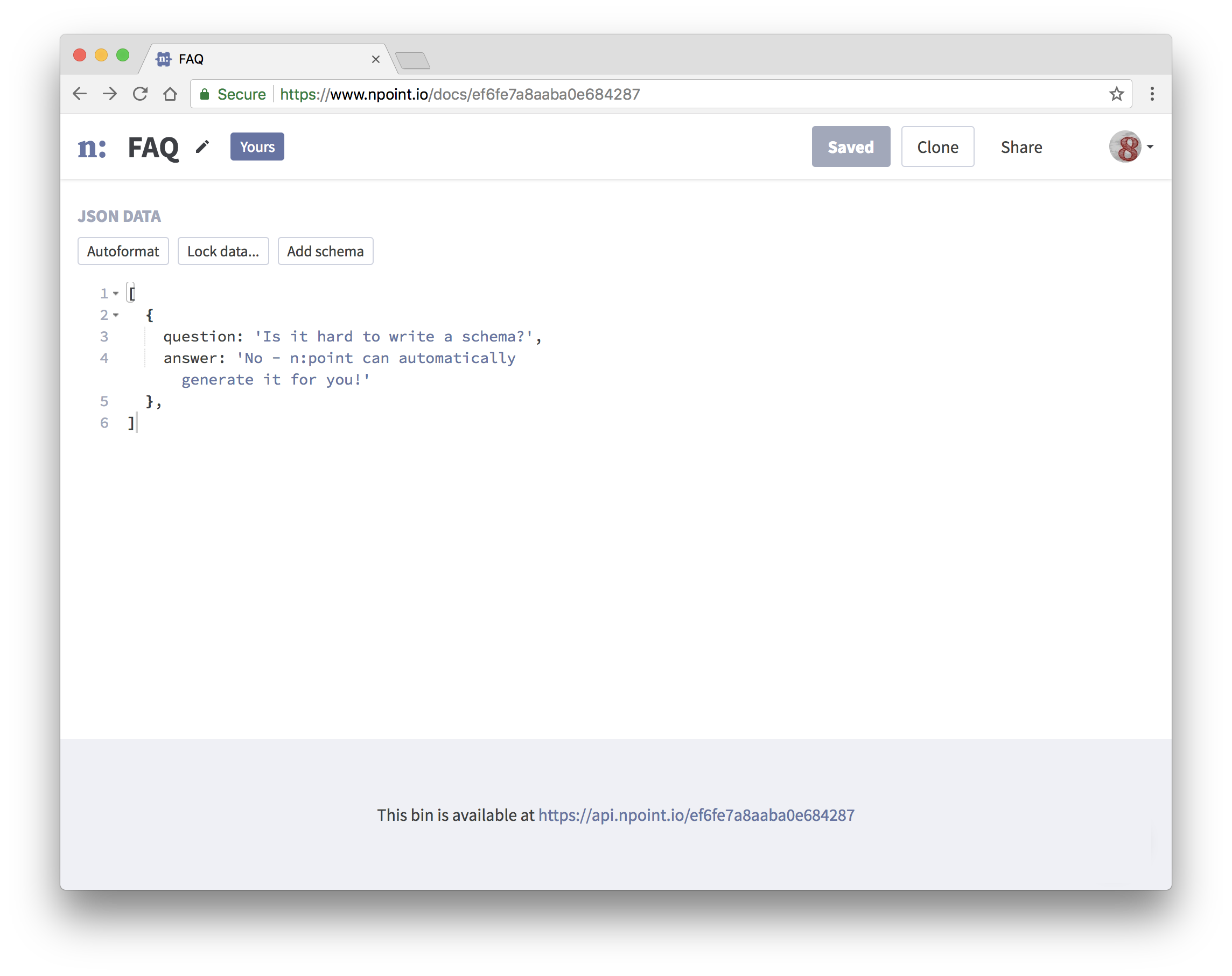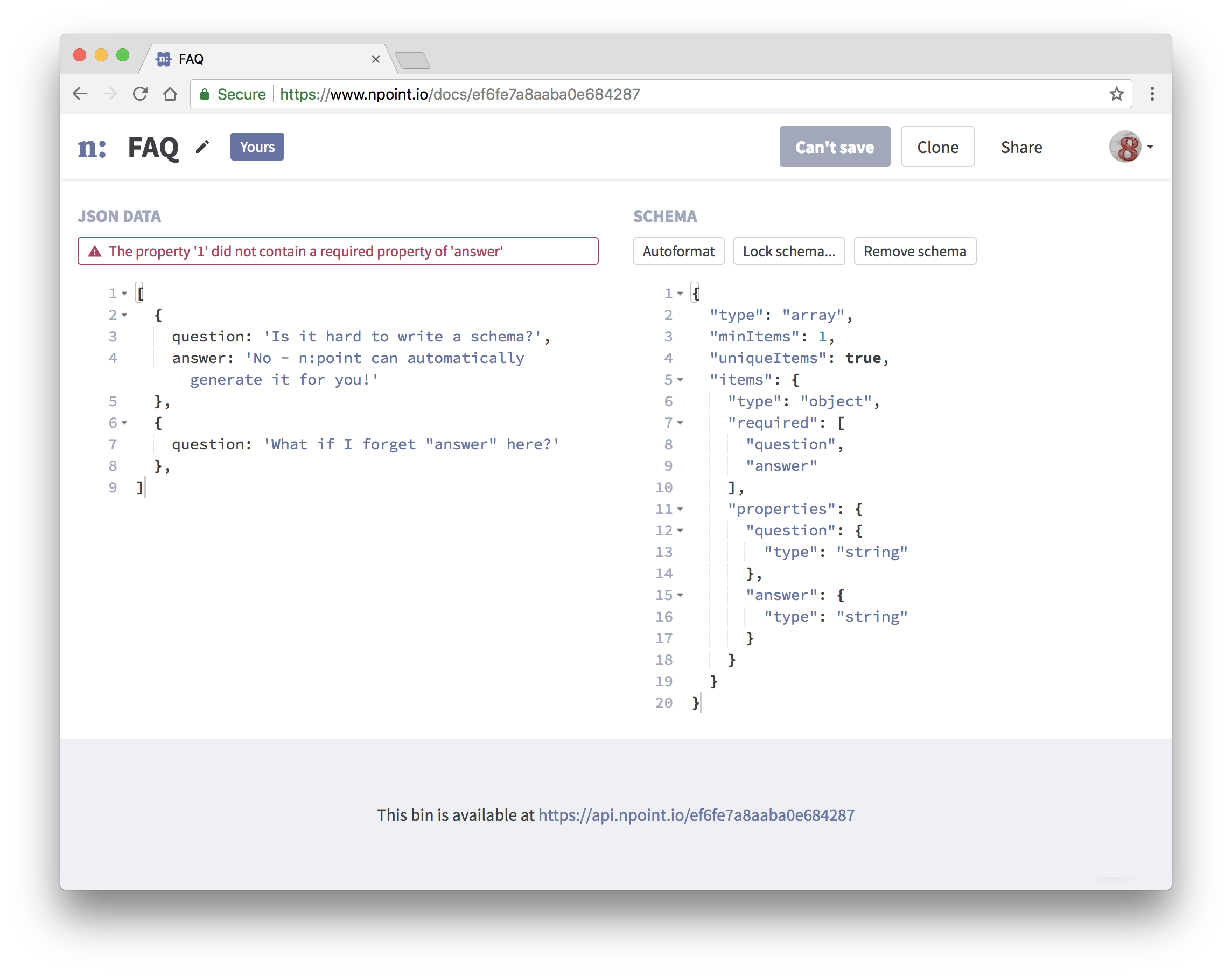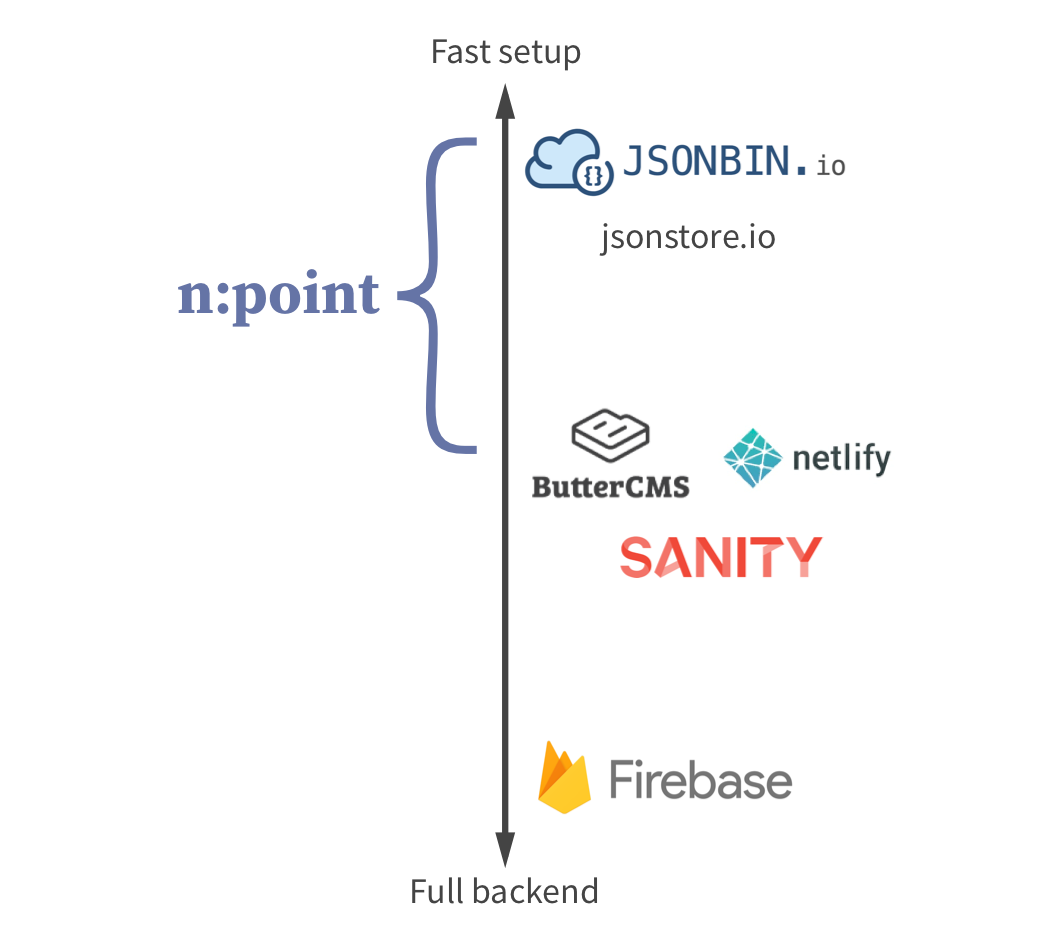Today I’m officially launching an old side project:
npoint.io is a JSON storage service with schema validation.

It allows you to save JSON bins online (similar to the well-named jsonbin.io, which I’m a fan of). n:point is different in a couple ways:
- It’s focused on really easy editing
- It lets you set and lock a schema, so you can be confident your downstream app will never break
- It’s open source (GitHub)
Backstory
Over the last couple years I’ve hit the same scenario a bunch of times:
- I’m working on a small app that has some configuration data
- I store that data as hardcoded JSON
- I wish I could easily let someone else edit it
The first time, I was making an FAQ page for Opendoor. I stored our FAQs as JSON so that I could generate pages in javascript (Angular.js).
It worked fine, but was annoying to change FAQs because we had to make a pull request and deploy. Marketing people (the main users) couldn’t do it themselves.
What I wanted was an interface like this to stash my FAQ data:

…but if I shared a JSON bin directly with our team, I was worried someone might forget, say, the “answer” property and break our whole FAQ.
npoint.io can guarantee that won’t happen:

There are a few other uses I have for n:point:
- Saving sample data for interview questions
- Saving data to make available to online services like Observable
- Working faster during hackathons (At one point I was working on a chatbot which followed a script, and I wanted my teammate to be able to edit that script as we iterated.)
It’s pretty flexible, so maybe there are other uses too!
Similar Tools
Most similar tools fall somewhere on the backend-as-a-service spectrum.

JSON Bins (e.g. jsonbin.io and jsonstore.io): I’m a big fan of these sites, and jsonbin.io in particular was an inspiration for me! In comparison, n:point focuses less on API-based access, and more on the editing experience and schema enforcement (a bit like a CMS).
CMS Systems (e.g. ButterCMS, Sanity and Netlify CMS: headless CMS systems provide a data editing interface, but expose their data over an API so you can build the frontend yourself (like n:point). The difference is that they tend to be harder to set up, maybe more than you want for prototyping.
Full backends (e.g. Firebase): Aims at being a full backend. Will take a decent amount of time to set up and get the auth rules right, but has high performance and a full feature set.
n:point aims to be as easy to set up as a JSON bin, but scale farther. Add schema validation only when you need it, or use it as a lightweight CMS, but don’t even bother logging in unless you want to.
(And it’s free! Go try it at npoint.io and see what you think)
Development Notes
Accounts
Adding user accounts slowed me down a lot for what was supposed to be a small project. I had to set up emails for password resets, add an account management page, and write a lot of validation rules, all of which distracted from the main purpose of the project.
I did it because I want to support privately-owned JSON bins, and I think the simplest way to do that is to let users share a login. So I wanted the account system to be email and password based, rather than via Google/Twitter/Github auth.
I also tried to use Devise, but was pretty unhappy with how that turned out. Since my frontend is a single-page React app, I had to customize the login process almost to the point of making Devise useless. I wanted to do emails via a third-party tool, so I couldn’t even use Devise to handle password reset emails.
In the future, I hope to try Auth0 or another third-party auth method, and avoid this as much as possible.
Emails
I used SendGrid and was really happy with it. I wrote this up as a separate post.
Unsafe Javascript Eval
I learned that it’s possible to eval unsafe javascript via an iframe with the
sandbox
attribute set. If you do this you should also load the iframe on a different
domain, to ensure that it doesn’t have access to cookies, and use Function()
rather than eval to avoid exposing local variables to the unsafe javascript.
This is also the approach that Observable uses.
React and Rails
I was happy with this stack choice. For this project I used create-react-app,
then configured it to build the javascript into the Rails assets folder so that
Rails can serve it. It’s simple and works well, with the downside that I have
to check in the compiled JS into version control.
For future projects I plan to use Next.js, so that I can get blazing fast page transitions and server-side rendering.
Tip when evaluating libraries: check if it's blazing fast. If it's fast, but the README doesn't specify whether its fastness is blazing, keep searching. Often you can find a similar library that does the same thing, but blazingly. Blazing means good.
— Andrew Clark (@acdlite) March 15, 2018
Open Source
It’s open source! Check it out here:
All feedback is very welcome. I hope you like it.
Posted on April 24, 2018
